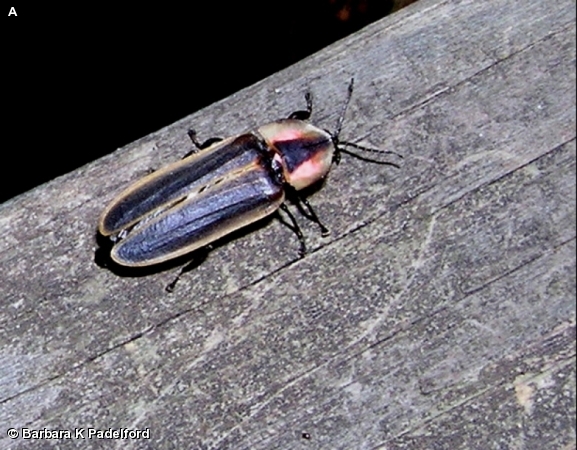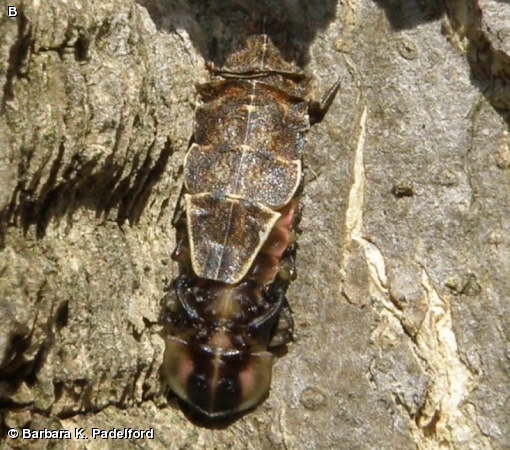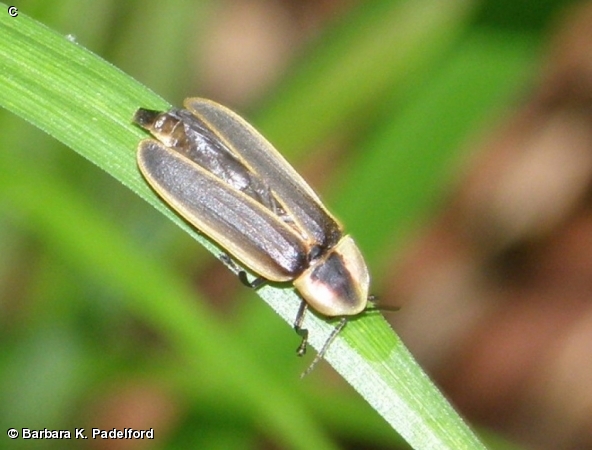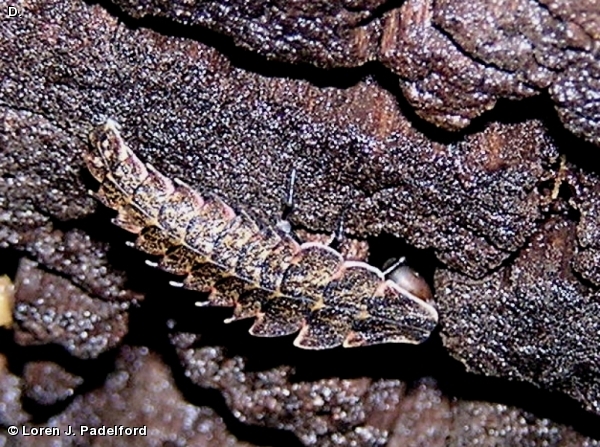
These insects are usually around ½ to a little less than an inch long. The elytra are dark brown to black with light markings. The head is concealed from above by the flattened pronotum (dorsal, sclerotized cuticle of the first thoracic segment of an insect). The body is soft and flattened often with nearly parallel sides. Both ends are rounded. The elytra loosely cover the body. The antenna is saw-toothed to threadlike. In this genus members have a median ridge on the pronotum. Photo A is an adult while photo B is a pupa o f this genus.
Fireflies prefer moist areas. Members of this genus live in the eastern U.S. Most species occur along forest edges or lake shores.
This firefly has not been identified to species but there are 16 U.S. species of Pyractomena. Firefly larvae are carnivorous, feeding on other insects, snails, and slugs. larva of this genus feed on snails. Light organs are well developed in both sexes. Members of this genus flash orange-yellow or amber. They sometimes flash from several feet above ground, especially on damp nights. Fireflies are popularly known as lightning bugs but are neither flies nor bugs but beetles. They are not all luminescent as adults but all known larva possess light bearing cells. Firefly beetles are characterized by their ability to flash a small, bright light which notifies the other sex of their location. Each species has its own personal rhythm of flashes At night, the very end (the last abdominal segment) of the firefly glows a bright yellow-green color. The firefly can control this glowing effect. Fireflies use their glow to attract other fireflies. Males flash about every five seconds; females flash about every two seconds. This firefly is harvested by the biochemical industry for the organic compound luciferin (which is the chemical the firefly uses for its bioluminescence). Both the adults and the larvae are carnivores. Members of this family have poisonous blood, excreting droplets from the base of their wing covers in defense.
Disclaimer: The content of NatureSearch is provided by dedicated volunteer Naturalists of Fontenelle Forest who strive to provide the most accurate information available. Contributors of the images retain their copyrights. The point of contact for this page is: Eric Scholar.



